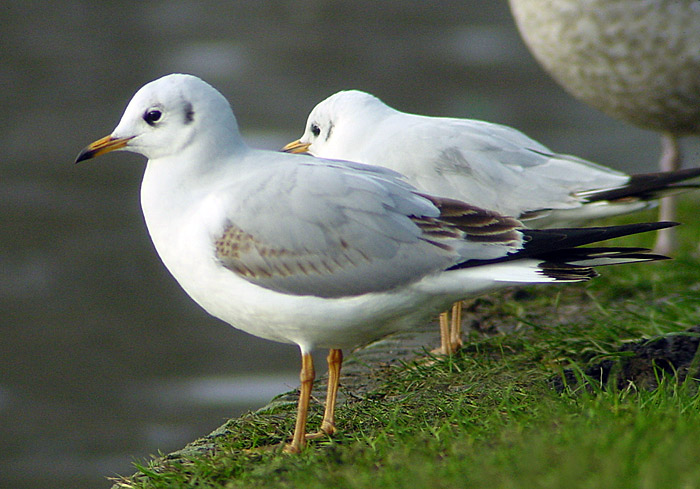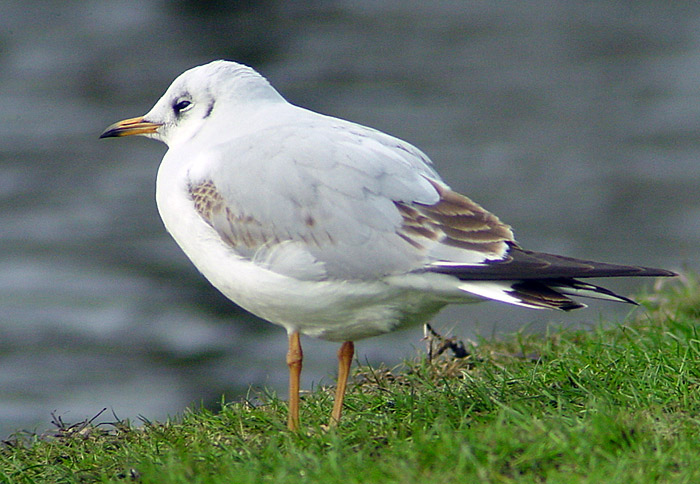 Black-headed Gull- Kokmeeuw (L. ridibundus)
Black-headed Gull- Kokmeeuw (L. ridibundus)
(last update:
Photo 7525: Black-headed Gull L. ridibundus 1cy, December 24 2002, Amsterdam, the Netherlands.
The partial autumn moult (post-juvenile moult into so-called "first winter") started right from the moment the nest was abandoned last summer and ended last September. In this bird, the partial moult included the head and under-parts but hardly any of the wing-coverts. Note the difference in extend of partial moult when this bird is compared to the 1cy bird in the background. The buff-brown coloration on the head and in the lower hind-neck has been replaced: the head is most white now with a typical black spot on the rear ear-coverts and a dark patch around the eye, in this bird slightly extending over the crown. The mantle and scapulars have been replaced for second generation feathers which are all grey. The tertials are still juvenile, brown centred and worn at the fringes. Sometimes, the lowest tertials may be predominantly grey in juvenile plumage, as in this bird. Note the protruding shaft in the lowest tertials, indicating that the fringes are worn and those feathers are not fresh. The pattern is mirrored by the greater coverts, with the inner greater coverts brown based and the outer greater coverts largely grey. A few inner median coverts and inner lower lesser coverts have been included in the partial autumn moult, with the new second generation feathers plain grey, contrasting with the still juvenile central and outer wing-coverts. As can be seen, the fringes of these juvenile outer wing-coverts are brown centred, bleached and worn at the fringes. Note the obvious dark tail-band, typical for 1cy birds. Next moult will take place in early spring (from February to April: moult into so-called "first summer" plumage) and again will include the body and head. The hood will be more or less developed, although often with white flecking. A few individuals may include the central tail-feathers in this partial moult.
|

